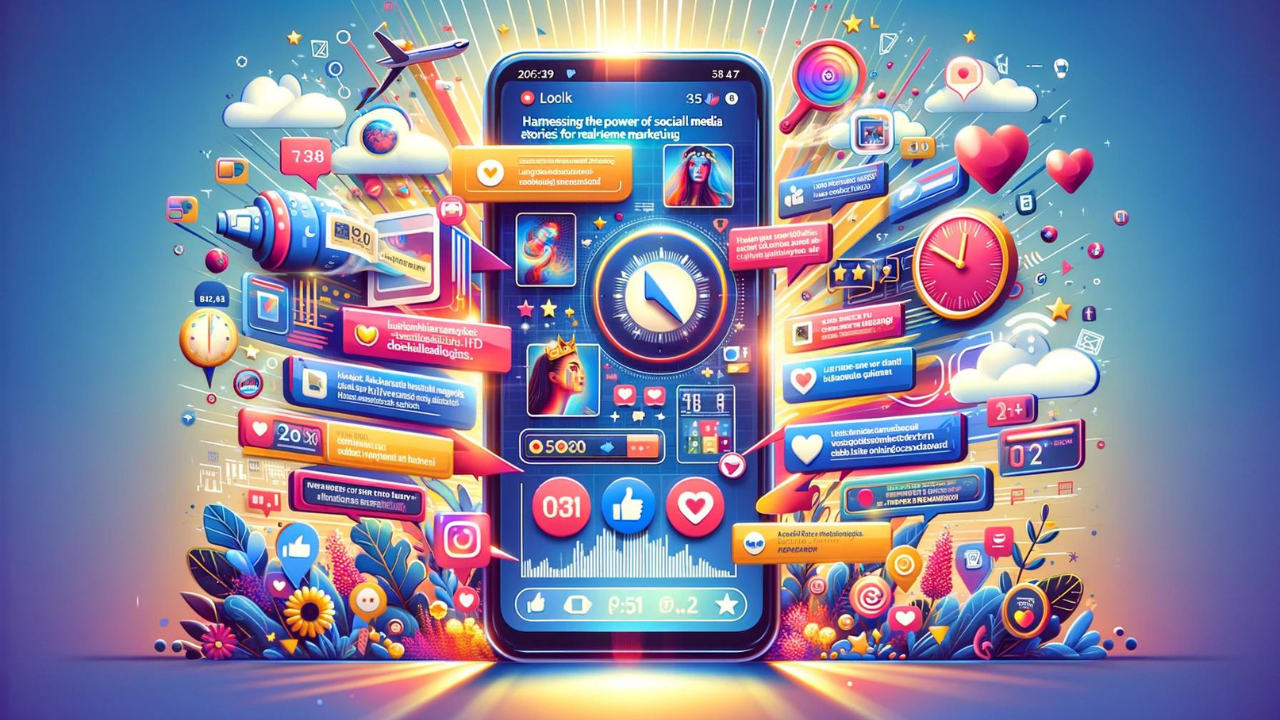
Imagine reaching your audience with timely, engaging content that disappears in 24 hours, creating a sense of urgency and excitement. Social media stories offer a dynamic way to engage audiences in real-time, transforming how brands interact with their followers. In this post, you’ll learn how to effectively use social media stories for real-time marketing to boost engagement and brand loyalty.
Understanding Social Media Stories
Definition
Social media stories are short, ephemeral content pieces that vanish after 24 hours, featuring images, videos, and interactive elements. This format encourages immediate engagement, as viewers know the content won’t be available for long.
Unlocking the Algorithm: 10 New Tactics to Boost Your Social Media Visibility
Platforms
Major platforms that support stories include:
- Instagram: Extensive features and high user engagement.
- Facebook: Integrates with Instagram for wider reach.
- Snapchat: Pioneered the stories format, popular with younger audiences.
- WhatsApp: Offers status updates similar to stories, popular for personal sharing.
Popularity
Stories have become incredibly popular, with millions of daily active users, making them a key tool for marketers. For instance, over 500 million people use Instagram Stories daily.
The Power of Real-Time Marketing
Definition
Real-time marketing is about engaging with your audience instantly, responding to events, trends, and customer interactions as they happen. It involves creating timely, relevant content that captures the moment.
Importance
In today’s fast-paced digital world, real-time marketing keeps your brand relevant and top-of-mind. It enables immediate interaction with your audience, fostering a sense of connection and engagement.
Benefits
- Increased Engagement: Real-time content captures attention more effectively.Read More
- Immediate Feedback: Quickly gauge audience reactions and adapt accordingly.
- Relevance: Content that taps into current events or trends resonates more with audiences.
Strategies for Using Social Media Stories in Real-Time Marketing
Live Updates
Use stories to provide live updates during events, product launches, or promotions, creating excitement and engagement. Share real-time footage, behind-the-scenes looks, and instant reactions.
Behind-the-Scenes Content
Sharing behind-the-scenes content humanizes your brand and builds a deeper connection with your audience. Showcasing the people and processes behind your products can foster trust and loyalty.
Interactive Features
Leverage interactive features like polls, Q&A sessions, and swipe-up links to engage viewers and gather valuable feedback. These elements make stories more engaging and encourage direct interaction.
User-Generated Content
Encourage followers to create and share content featuring your brand, then showcase it in your stories. This not only boosts engagement but also provides authentic content that resonates with your audience.
Timely Content
Share content that resonates with current events, holidays, and trending topics to stay relevant. Timely content captures attention and encourages viewers to engage with your brand in the moment.
Creating Compelling Stories
Visual Appeal
- High-Quality Images and Videos: Ensure your visuals are high quality and visually appealing.
- Graphics and Animations: Use graphics and animations to enhance the visual appeal of your stories.
Everything You Need To Know About Google Web Stories
Storytelling Techniques
- Hook Your Audience: Start with an attention-grabbing element.
- Keep It Concise: Stories are short, so make your message clear and concise.
- Include a Call-to-Action: Encourage viewers to take action, whether it’s swiping up, visiting a website, or participating in a poll.
Consistency
Maintain consistency in branding and messaging across all stories. Consistent visuals and tone strengthen your brand identity and ensure your stories are instantly recognizable.
Measuring Success
Metrics to Track
Track key metrics such as:
- Views: Number of people who viewed your stories.
- Engagement Rates: Interactions such as replies, taps, and swipe-ups.
- Completion Rates: Percentage of viewers who watched your story till the end.
Analytics Tools
Utilize analytics tools like:
- Instagram Insights: For detailed story performance metrics.
- Snapchat Analytics: For tracking views and engagement on Snapchat.
- Third-Party Tools: Platforms like Hootsuite and Sprout Social offer comprehensive analytics.
Adjusting Strategies
Use analytics data to adjust and improve your real-time marketing strategies. Regularly review performance to identify what works and what doesn’t.
Case Studies and Success Stories
Examples
- Nike: Used Instagram Stories to share behind-the-scenes content of their product launches, resulting in high engagement and increased sales.
- Starbucks: Leveraged user-generated content in their stories to promote new drinks, boosting customer participation and brand loyalty.
Results and Impact
Brands that effectively use social media stories for real-time marketing often see significant improvements in engagement, customer satisfaction, and overall brand perception.
FAQs
- What are social media stories?
- Social media stories are short, ephemeral content pieces that disappear after 24 hours, featuring images, videos, and interactive elements.
- Why is real-time marketing important?
- Real-time marketing allows brands to engage with their audience instantly, increasing relevance and engagement.
- How can I measure the success of my social media stories?
- Track metrics such as views, engagement rates, and swipe-up actions, and use analytics tools to analyze performance.

